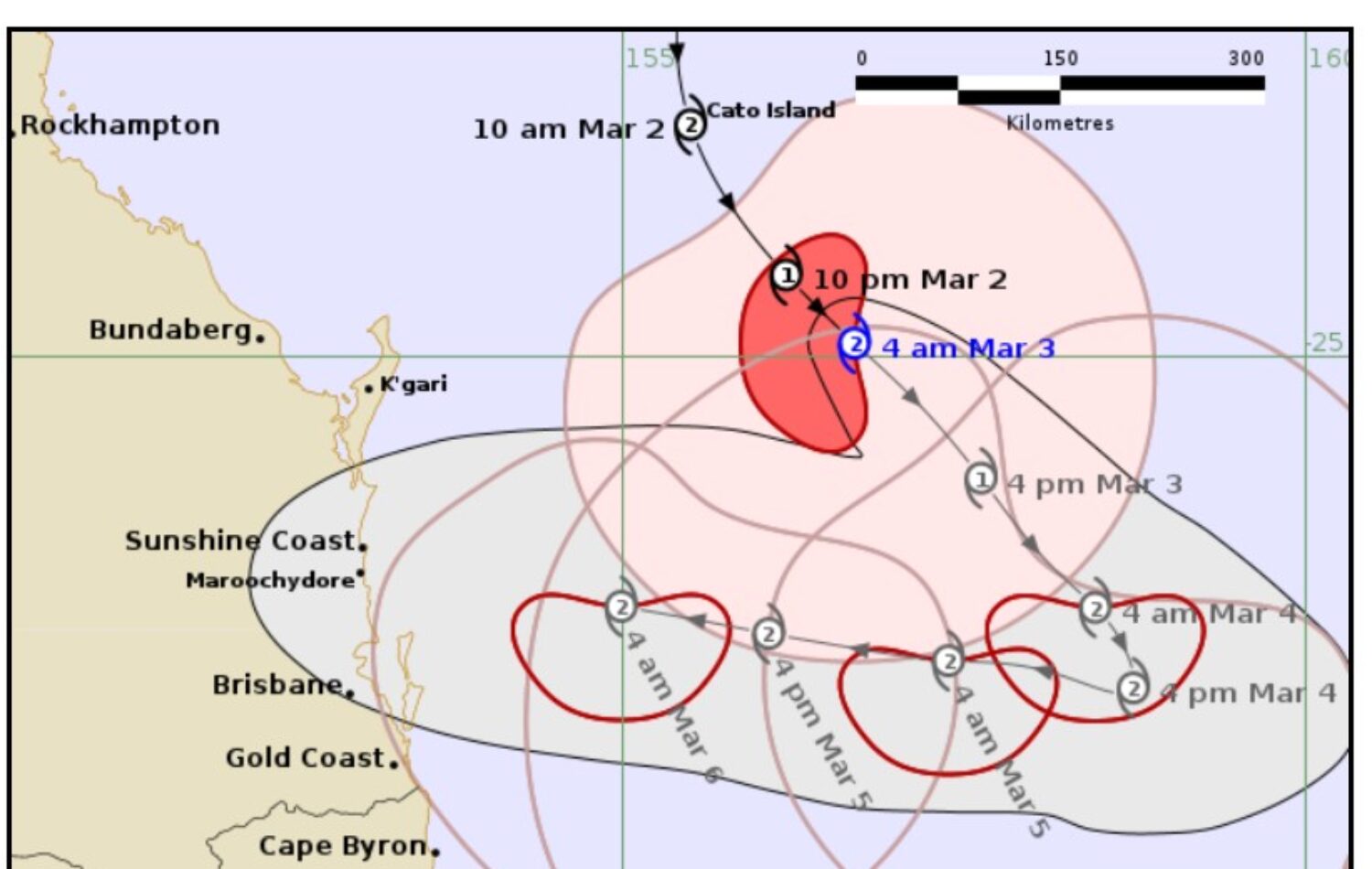The California Supreme Court ruled gig workers can continue to be treated as independent contractors, not employees, dealing a blow to the state legislature’s Labor regulations. The ruling upheld the constitutionality of Proposition 22, a 2020 ballot initiative that classified gig workers for companies such as Uber and Postmates as independent workers.
Importers dependent on ports along the East and Gulf coasts are nervous. They have few options, none of them great, if longshore Labor(ILA), as threatened, strikes at the end of September if an agreement isn’t reached by then. It’s nearly too late to join other importers that have frontloaded cargo to those ports, with mid-August being the latest Asia shipments can be loaded at origin and arrive before Sept 30. Even if an expedited West Coast routings are possible, Asia outbound capacity has been tight since late July, although there are various signs of loosening in August.
Transpacific Trade
The ocean container shipping market reached a tipping point in July, with long term rates on major fronthaul trades showing signs of life just as spiralling short term rates begin to soften.
This coincides with short term rates on the Transpacific Eastbound beginning to soften in July from the massive increases seen over recent months. Long term ocean container shipping rates remained subdued despite massive increases on the short term market in May and June, but that is starting to change. Short term rates on Asia to the West Coast trade increased more than 140% between April 15th and July 1st, while the long term market increased by 20%.
However, short term rates to the West Coast have fallen by 12% since 1 July, just as the long term market shows signs of strength.
Increasing long term rates and decreasing short term rates means the spread is narrowing between the markets, which presents a delicate balance between shippers and carriers later this year. Importers will be hoping the spot market crashes back down hard and fast, while carriers will be doing everything possible to keep short term rates elevated for as long as possible.
Meanwhile, our ocean supply chains remain under pressure and, as there are potential disruptions on the horizon.
Diversions are still in place in the Red Sea, meaning the majority of container ships are continuing to sail around the Cape of Good Hope. There is the threat of union action at ports on the East and Gulf Coasts, while a Trump presidency could see businesses rush to ship goods ahead of potential new tariffs on Chinese imports. While a Harris presidency could support continued inflation. There is also the risk of new geopolitical incidents, as we are seeing in Bangladesh where civil unrest is impacting port operations.
It may not take much to push our ocean supply chains back into the red and send spot rates heading upward once again, which would also have consequences for the long term market and into the 2025-26 contract season.
Imports inside the Transpacific in the second quarter were up 7.8% from a year ago, accelerating through the period as retailers frontloaded cargoes amid threats of possible Labor disruptions on the East and Gulf coasts this fall.
Ports Worldwide
Container dwell times improved at major West Coast gateways in June despite strong volume growth amid front-loaded cargoes, and port managers say their marine terminals have both the capacity and fluidity needed to handle what’s expected to be a healthy peak season.
Los Angeles, Long Beach, Oakland, Seattle-Tacoma and Vancouver registered double-digit percentage import growth in June, with volumes up 6% at Prince Rupert. Yet rail container dwell times improved from the month before, port managers said, adding that rail networks leading to key inland destinations such as Chicago and Memphis are operating smoothly.
The strong import volumes from Asia are due to several factors, including front-loading of fall and holiday merchandise and a diversion of some discretionary cargo to the West Coast from the East and Gulf coasts due to concerns about a possible strike by the International Longshoremen’s Association (ILA). Having already handled 10 new trans-Pacific services this year while recording improved performance metrics, and with ports along the West Coast of North America operating at 50% to 80% of capacity, the gateways say they are well-positioned to handle additional diversions from the East and Gulf coasts should an ILA strike occur after the current Labor deal expires on Sept. 30.
The Galveston Wharves has kicked off more than $90 million in phased construction work to improve and expand its West Port Cargo Complex and grow its cargo business. The groundbreaking ceremony on July 24 marked the beginning of major infrastructure work set to be completed in 2026.
The Georgia Ports Authority (GPA) handled 5.25 million TEUs in fiscal year 2024, which ended June 30, 2024. The performance constitutes a decrease of 2.3 percent or 123,000 TEUs compared to the previous year. Despite the slight decline in volumes, Georgia Ports continues to have one of the nation’s best connectivity rankings in the nation with 35+ vessels calling every week in Savannah. The Authority recently completed construction of its new Garden City Terminal West facility and continues to add new Ship-to Shore cranes and Rubber Tire Gantry cranes built by the Finnish company, Konecranes. Georgia Ports is the only operator in the U.S. using 100 percent Konecranes in its fleet.
The Panama Canal has introduced a new Long-Term Slot Allocation (LoTSA) Method for Neo-Panamax vessels designed to increase transit certainty and flexibility. The changes as part of the Transit Booking System were announced through an Advisory to Shipping.
Currently, the slot offering in the Transit Booking System is done daily ahead period before the required transit date. Through this method, several transit booking slot packages corresponding to January of the following year will be offered to different market segments; as a result a single client will be able to obtain multiple bookings in one transaction.
Each package will include a specific number of slots with weekly or monthly frequency per year, for both northbound and southbound transits.
Today, the Panama Canal is looking to increase the number of daily vessel transits to 36 as of September as it seeks to resume normal transit levels in the coming months following robust rainfall levels in June and July. Even though there has not been an official announcement to shipping clients, it is very likely that the increase will take place. The usual number of transits is between 36 to 38 per day, the spokesperson added, although 40 to 42 vessels can transit in ideal conditions.
Port Houston, the fifth-largest container port in the nation, has surpassed the two million twenty foot equivalent (TEU) mark faster than ever. It handled 2,098,117 TEUs among its terminals through the first six months of the year.
Rail
Rail container dwell times at ports improved from the month before, and rail networks leading to key inland destinations such as Chicago and Memphis are operating smoothly.
Authorities have accused Norfolk Southern Corp. of causing repeated delays of Amtrak passenger trains along a lengthy route spanning New York City to New Orleans. The railroad has routinely given freight trains preference over passenger trains along a 1,140-mile stretch of the Crescent Route, a violation of federal law, the Justice Department said in a civil complaint Tuesday. The agency cited examples including Norfolk forcing an Amtrak train to wait over an hour while three separate freight trains passed.
International intermodal service into Chicago, the primarily inland hub for freight to West Coast ports and the Northeast, has been quite consistent this year. Yes, there have been issues with BNSF Railway and Norfolk Southern Railway, but neither were nearly as disruptive as during the pandemic. Few BCOs, however, are convinced that Chicago won’t become congested again with significant delays if there is a second consecutive year of double-digit IPI growth.
Norfolk Southern is investing to grow capacity on a key rail line in the state of Alabama, the 3B Corridor, which connects markets in northern and central Alabama to the Port of Mobile and destinations worldwide. The more-than $200 million investment positions the line to accommodate expected growth in several sectors as the Southeast progresses as an economic powerhouse for the economy. Retired Port Director, Jimmy Lyons, pushed this action for years. The 3B Corridor is strategically aligned with the Port of Mobile, which contributes $85 billion in annual economic value to Alabama.
Airfreight
Air cargo spot rates from Asia continue to rise, despite a drop in demand from China to the USA in the last two full weeks.
Average global air cargo rates rose by a further 2% in the third full week of July thanks to increases from Asia Pacific and Middle East & South Asia (MESA) origins, despite total worldwide tonnages declining for the 3rd consecutive week.
Based on a full-market average of spot rates and contract rates, average prices from Asian origins rose by a further +2% in week 29 (15 to 21 July)up by +25% compared with the equivalent week last year. These pricing increases come despite falling demand from all of the main regions including a -7% week-on-week. Asia Pacific (-2%) and North America (-2%) were more stable, with tonnages from Asia around +13% higher, year on year (YoY).
Worldwide chargeable weight is up +7% from a year ago, although that compares with a rise of around +10% or more, throughout most of this year.
After dropping by -2% and -3% in the previous two weeks, chargeable weight from the Transpacific to the US bounced back with a +2% increase compared with the previous week, accompanied by a +5% rise in spot rates. Rates are at their highest level for several months, and up +67% compared with this time last year.
Tonnage from China to the USA were down by -8%. That decline is particularly noticeable on the China to Los Angeles (LAX) market, where tonnage was down -23%, year-on-year. China to LAX tonnage began declining around three months ago, around the time when authorities tightened certain customs inspections policies for inbound shipments from China, especially at LAX.
Demand from Bangladesh has been somewhat volatile, and dropped substantially in the last two weeks, most likely linked to disrupted internet services in the country last week.
The quick recovery from July’s global IT outage produced no significant ongoing disruption to resurgent air cargo demand, with rates rising for a sixth consecutive month. The global IT outage affecting Microsoft systems on 19 July did, however, produced widespread disruption, with flight delays and cancellations that lasted more than a week. The resulting cargo backlogs saw cargo load factors on some impacted airlines increase up to 4 percentage points compared to the previous week. Load factors had mostly recovered to pre-outage levels by 28 July.
As is often the case, short-term panic among shippers and forwarders pushed up the price of capacity, which rose to its highest level of the year in the last week of July.
For the air cargo market, it’s now all eyes on late August for the first signs of a proper peak season, which would be the icing on top of the cake for airlines after such unexpected volumes and demand growth in the first seven months of the year.
Domestic Trucking
The cost of a diesel-powered Class 8 truck is about $180,000, whereas a comparable battery-electric Class 8 truck costs more than $400,000, according to American Trucking Associations. While charging infrastructure is another major concern among potential EV adopters, infrastructure is a moot point unless the total cost of ownership for an EV makes sense for a small business.
As many as 14% more truck drivers are on the road compared with March 2020 while freight volumes are up just 4% over a similar period. Additionally, when goods arrive in the US, retailers aim to use rail because it’s cheaper. Many believe that we are in the beginning parts of hopefully a recovery in the industry. Trucking executives are optimistic that the end of their recession may be close as freight rates look set to grow for the first time in nearly two years. The average cost of moving goods by truck is set to rise 0.2% year-on-year this month after 27 consecutive months of declines. Demand looks to be returning to pre-pandemic levels and trucking executives are talking up an impending recovery as their stock prices rise. If the trends over the past few months continue, the market should see demand building as we exit the third quarter and some return of seasonal activity for the fourth quarter for the first time in years.
The American Trucking Associations has commended the Senate Appropriations Committee for voting to advance the transportation funding bill with provisions that would support the trucking industry and professional drivers. In addition to investing in vital infrastructure and U.S. Department of Transportation (USDOT) programs, the bill incorporates measures similar to those previously approved by the House Appropriations Committee to support expanded truck parking, prevention of cargo theft, protections against predatory towing and the integrity of the Safe Driver Apprenticeship Pilot Program (SDAP).
It is no secret that this Congress has been by far the most unproductive in modern history. The legislative branch has managed to process a mere few dozen bills compared to the hundreds of bills it typically passes at this point in the biennium session.
Regrettably, the posturing and partisanship that have increasingly defined the lawmaking process do not appear to be going anywhere anytime soon. The casualty of this gridlock is the failure to enact good public policy that could strengthen our supply chain, thereby helping to ease inflation, create jobs, and grow our economy.
Having said that and despite this challenging environment, the ATA refuses to give up, they adapt. Several must-pass bills remain on Congress’ to-do list before the end of the year, and the ATA has focused their efforts on packing trucking’s priorities into these few bills that are moving forward. In July, the House Appropriations Committee voted to approve two spending bills that would fund multiple federal agencies, including the Department of Transportation. Not to be outdone, the Senate Appropriations Committee overwhelmingly passed its own transportation funding bill(above). These are pivotal steps in the legislative process. While extensions are common, Congress’ deadline to pass these bills and avert a shutdown is September 30th. Following intense and targeted outreach to the champions on Capitol Hill, these bills included 11 key pro-trucking policies. Now that they have been incorporated into the text of the bills, the ATA is in a much stronger position to keep them intact as they work their way through the legislative process. Fingers crossed.
Its Time!
All US Importers must consider the new BRi ERP and Order Management Program – track your product/shipments anytime and anywhere at any level you prefer – From an Order Number to where your product is at a SKU level in the manufacturing process! To ensure you maintain visibility to your shipments as they move through the supply chain, please take advantage of BRi PATHWAY. The information in PATHWAY is real-time and available 24/7.
To obtain a login for your account, please respond to this email so we can get you started!
As a valued customer, we hope that you will continue to trust us to source the best options for your supply chain needs now and into the future.




